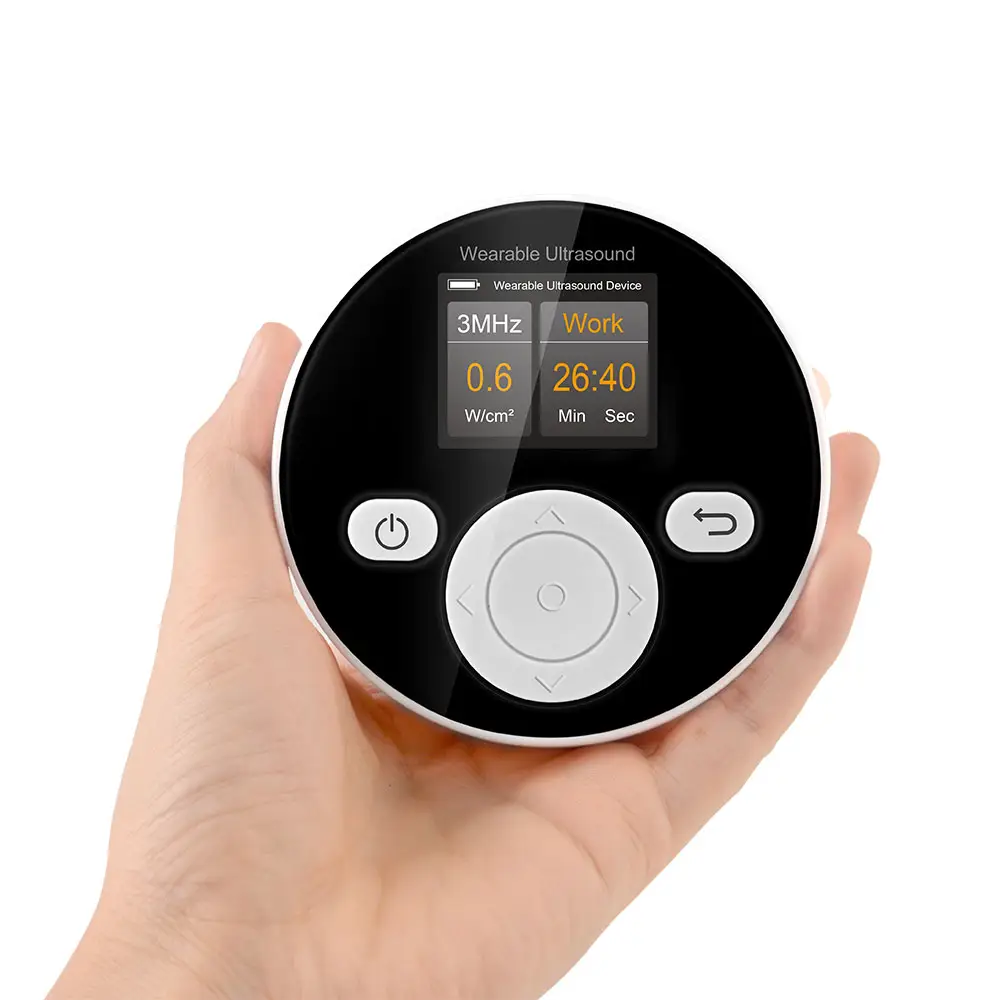Thérapie par ultrasons comparée à d'autres modalités de PT : une analyse approfondie pour la guérison
Si vous avez déjà consulté un physiothérapeute pour une douleur, une entorse ou une tendinite, vous avez probablement été confronté à divers outils et techniques. Parmi les plus courants figure la sonde douce recouverte de gel d'un thérapie par ultrasons appareil. Mais en quoi consiste exactement ce traitement ? Et surtout, comment se compare-t-il aux autres traitements courants utilisés par votre thérapeute ?
Il ne s'agit pas seulement d'une question académique. Comprendre le « pourquoi » derrière votre traitement peut vous permettre de devenir un acteur actif de votre propre rétablissement. Dans ce guide complet, nous démystifierons la thérapie par ultrasons et la comparerons directement à d'autres modalités populaires de physiothérapie telles que la TENS, la thérapie thermique et la cryothérapie.
Tout d'abord, qu'est-ce que la thérapie par ultrasons ?
Éclaircissons une idée fausse courante : les ultrasons utilisés en physiothérapie ne sont pAS pas les mêmes que les ultrasons diagnostiques utilisés pour visualiser les bébés dans l'utérus.
L'ultrasonothérapie est une modalité de chaleur profonde qui utilise des ondes sonores à haute fréquence, bien au-delà de ce que l'oreille humaine peut percevoir, afin de favoriser la guérison au niveau cellulaire. Le thérapeute déplace un transducteur (la sonde) sur votre peau à l'aide d'un gel de couplage, et ces ondes sonores pénètrent les tissus.
Il existe deux types principaux :
Ultrasons thermiques (chaleur profonde) : Les ondes sonores provoquent des vibrations microscopiques dans vos tissus, générant une chaleur douce et profonde. Cela augmente la circulation sanguine, réduit les spasmes musculaires et améliore l'élasticité des tissus.
Ultrasons non thermiques (ou mécaniques) : En utilisant une onde pulsée, cette méthode crée une micro-cavitation (formation et effondrement de petites bulles) dans le liquide entourant les cellules. On pense que cet effet mécanique réduit l'inflammation, améliore la perméabilité de la membrane cellulaire et accélère le processus de guérison.
Utilisations courantes de la thérapie par ultrasons :
Tendinite (par exemple, tennis elbow, coiffe des rotateurs)
Élongations musculaires et entorses ligamentaires
Contractures articulaires
Fasciite plantaire
Destruction des tissus cicatriciels
Voyons maintenant comment elle se compare à ses homologues.
Comparaison directe : Thérapie par ultrasons contre autres modalités
1. Thérapie par ultrasons contre TENS (stimulation électrique transcutanée des nerfs)
C'est probablement le point de confusion le plus fréquent, car les deux méthodes impliquent des appareils munis d'électrodes ou d'une sonde.
| Caractéristique | Thérapie par ultrasons | Unité TENS |
|---|---|---|
| Objectif principal | Guérison et réparation. Vise à modifier les tissus au niveau cellulaire afin de réduire l'inflammation et favoriser la réparation. | Gestion de la douleur. Conçue pour interférer avec les signaux de douleur en route vers le cerveau (théorie du portillon) et/ou stimuler la libération d'endorphines. |
| Mécanisme | Les ondes sonores produisent une chaleur profonde ou un micro-massage. | Des courants électriques à basse tension stimulent les nerfs sensitifs. |
| Sensation | Souvent une sensation légère de chaleur (effet thermique) ou aucune sensation du tout (non thermique). | Une sensation nette de « picotement » ou de « bourdonnement ». |
| Profondeur d'action | Profonde – cible les tissus situés à plusieurs centimètres sous la peau. | Superficielle – affecte principalement les nerfs situés dans la peau et juste en dessous. |
| Idéal pour | Guérison des tissus pour les affections chroniques comme la tendinite. | Soulagement de la douleur aiguë et chronique (par exemple, arthrite, douleur post-opératoire). |
Le verdict : Ce sont des outils fondamentalement différents. Pensez à l'échographie comme un outil de réparation et La TENS comme outil de blocage de la douleur . Ils sont souvent utilisés conjointement au cours d'une même séance de kinésithérapie.
2. Thérapie par ultrasons contre thérapie thermique (poches chauffantes, coussins chauffants)
L'ultrasonothérapie et la thermothérapie visent toutes deux à réchauffer les tissus, mais la méthode et la profondeur constituent des différences clés.
| Caractéristique | Thérapie par ultrasons (thermique) | Thérapie thermique superficielle |
|---|---|---|
| Profondeur de pénétration | Profond. Peut efficacement chauffer des structures telles que les articulations, les tendons profonds et les couches musculaires. | Superficiel. Réchauffe principalement la peau et les muscles les plus superficiels (quelques millimètres de profondeur). |
| Application | Ciblé, concentré et contrôlé par le thérapeute. | Application large et générale sur une zone plus étendue. |
| Effet principal | Augmente la circulation sanguine et l'élasticité dans les structures profondes et spécifiques. | Augmente superficiellement la circulation sanguine, procure une sensation générale de relaxation et peut réduire la contracture musculaire. |
| Idéal pour | Lésions profondes et spécifiques comme une tendinite chronique de la coiffe des rotateurs. | Raideur musculaire générale , relaxation avant l'étirement, ou affections généralisées telles que les spasmes musculaires. |
Le verdict : La chaleur superficielle est excellente pour l'échauffement général et la relaxation, tandis que l'ultrasonothérapie est un outil précis pour délivrer de la chaleur thérapeutique aux zones problématiques profondes.
3. Ultrasonothérapie contre cryothérapie (sacs de glace, cryothérapie)
Cette comparaison est un débat classique de « chaleur contre froid », mais avec les ultrasons dans le camp de la « chaleur ».
| Caractéristique | Thérapie par ultrasons | Thérapie au Froid |
|---|---|---|
| Objectif principal | Favoriser la guérison et la relaxation en augmentant le taux métabolique et le flux sanguin. | Contrôler l'inflammation et engourdir la douleur en contractant les vaisseaux sanguins et en ralentissant la conduction nerveuse. |
| Effet physiologique | Vasodilatation (augmentation du flux sanguin). | Vasoconstriction (diminution du flux sanguin). |
| Meilleur usage | Affections chroniques (stades sous-aigus ou ultérieurs de la guérison) lorsque l'inflammation n'est plus le problème principal. | Blessures aigües (premières 24 à 72 heures) et lors des poussées aiguës de douleur et d'enflure. |
Le verdict : Ces modalités sont utilisées aux extrémités opposées de la chronologie de la blessure. Le froid est indiqué pour les blessures récentes et inflammatoires , tandis que l'échographie est destinée aux phases ultérieures de guérison et de remodelage . L'utilisation d'une échographie sur une cheville fraîchement enflée pourrait aggraver l'inflammation.
4. Échographie thérapeutique contre thérapie manuelle
Cette comparaison oppose la technologie aux mains expertes d'un thérapeute.
| Caractéristique | Thérapie par ultrasons | Thérapie manuelle |
|---|---|---|
| Application | Une modalité passive appliquée par une machine. | Une technique active, effectuée directement par le thérapeute. |
| Mécanisme | Biophysique (ondes sonores). | Biomecanique (mobilisations articulaires, massage des tissus mous, relâchement myofascial). |
| Avantage principal | Peut fournir un traitement très localisé et profond, difficile à réaliser uniquement avec les mains. | Fournit un retour diagnostique, peut traiter les restrictions articulaires et musculaires complexes, et s'adapte facilement en temps réel. |
| Limitation | Passif ; ne traite pas la mécanique articulaire ni les schémas de mouvement complexes. | Nécessite une grande compétence et peut être physiquement exigeant pour le thérapeute. |
Le verdict : Ce n'est pas une situation de « soit / soit ». La thérapie physique la plus efficace combine souvent les deux. Un thérapeute pourrait utiliser l'échographie pour préparer le tissu (en le rendant plus malléable) puis effectuer une thérapie manuelle pour étirer, mobiliser et corriger le dysfonctionnement sous-jacent .
Les preuves et les controverses : l'échographie thérapeutique est-elle efficace ?
Il est essentiel d'aborder le débat en cours dans le domaine de la kinésithérapie. Bien que l'échographie soit un traitement courant dans les cliniques depuis des décennies, la pratique fondée sur des preuves scientifiques commence à remettre en question son efficacité.
Les éléments de preuve à l'appui : De nombreuses études et une multitude d'anecdotes cliniques montrent des résultats positifs pour certaines affections, en particulier les tendinopathies chroniques et la destruction du tissu cicatriciel. Les effets biophysiques sont sont réels.
Les critiques : Un nombre croissant de recherches de haute qualité (revues systématiques et méta-analyses) ont montré que, pour de nombreuses affections, l'échographie n'est pas plus efficace qu'un placebo les critiques affirment que les effets sont souvent minimes et que le temps du patient serait mieux utilisé pour des interventions actives telles que l'exercice thérapeutique.
Alors, quelle est la conclusion ? L'échographie thérapeutique ne devrait pas être utilisée comme traitement unique. Sa valeur maximale réside dans son utilisation en complément modalité adjointe —une partie d'un plan de traitement complet qui met fortement l'accent sur l'exercice actif, la thérapie manuelle et l'éducation du patient.
Le bilan final : un outil parmi d'autres
Aucune modalité unique n'est une solution miracle. La meilleure approche en physiothérapie est une approche personnalisée.
Thérapie par ultrasons s'illustre comme un outil ciblé, à chauffage profond et biostimulant, pour des lésions spécifiques des tissus mous en phase subaiguë ou chronique.
C' est vrai. pas un substitut à l'exercice actif, qui constitue la pierre angulaire du renforcement et du rétablissement de la fonction.
Son efficacité dépend fortement du niveau d'expertise du thérapeute et de la condition spécifique traitée.
Lorsque vous allez en physiothérapie, votre thérapeute est comme un chef cuisinier expérimenté. Il dispose d'un garde-manger complet d'ingrédients (modalités) et choisit la combinaison idéale pour concocter le « repas » parfait adapté à votre rétablissement unique. L'échographie pourrait être une épice dans cette recette, mais elle est rarement le plat principal.
Travaillez toujours avec un physiothérapeute agréé qui peut effectuer une évaluation approfondie et déterminer si la thérapie par ultrasons, ou toute autre modalité, est le bon choix pour votre parcours de guérison spécifique.
Table des Matières
- Thérapie par ultrasons comparée à d'autres modalités de PT : une analyse approfondie pour la guérison
- Tout d'abord, qu'est-ce que la thérapie par ultrasons ?
-
Comparaison directe : Thérapie par ultrasons contre autres modalités
- 1. Thérapie par ultrasons contre TENS (stimulation électrique transcutanée des nerfs)
- 2. Thérapie par ultrasons contre thérapie thermique (poches chauffantes, coussins chauffants)
- 3. Ultrasonothérapie contre cryothérapie (sacs de glace, cryothérapie)
- 4. Échographie thérapeutique contre thérapie manuelle
- Les preuves et les controverses : l'échographie thérapeutique est-elle efficace ?
- Le bilan final : un outil parmi d'autres





